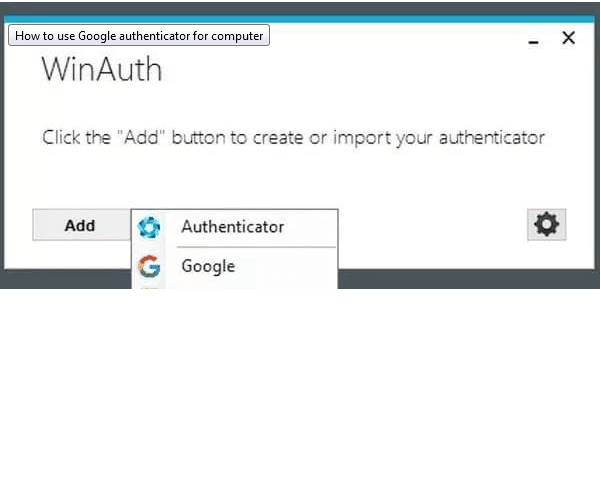

- GOOGLE AUTHENTICATOR DESKTOP HOW TO
- GOOGLE AUTHENTICATOR DESKTOP CODE
- GOOGLE AUTHENTICATOR DESKTOP PASSWORD
How this will work will depend on the site.
GOOGLE AUTHENTICATOR DESKTOP CODE
Fair warning, you must be able to log into the site in question and access the 2FA QR code to add the site to Authenticator. With Authenticator installed, you can now add your first site.
GOOGLE AUTHENTICATOR DESKTOP HOW TO
Now that Flatpak is installed, you can install Authenticator with the command:įlatpak install flathub How to add a site to Authenticator

Once the installation completes, add the Flathub repository with:įlatpak remote-add -if-not-exists flathub Open a terminal window and issue the command: On the off-chance your distribution doesn’t ship with Flatpak support built-in, such as Ubuntu, here’s how you can install it. Once you have those things at the ready, it’s time to install. Oracle Linux checklist: What to do after installation This Linux learning path will help you start using the OS like a proītop is a much-improved take on the Linux top command

Open-source repository SourceHut to remove all cryptocurrency-related projects You’ll also need a user with sudo privileges. To install and use Authenticator, you’ll need a Linux distribution that supports Flatpak, which is pretty much every distribution.
GOOGLE AUTHENTICATOR DESKTOP PASSWORD
SEE: Password breach: Why pop culture and passwords don’t mix (free PDF) (TechRepublic) What you’ll need One thing I like about Authenticator is that it makes adding sites incredibly easy thanks to a built-in screenshot tool. You can search the 2FA Directory and any site that comes up as supporting tokens will work with Authenticator. In fact, any siteor service that supports tokens should work with it. That app is called Authenticator, and it’s a GTK app that supports over 200 providers. If your operating system of choice is Linux, there’s one option that’s quite good. But what about the desktop? What apps are available for those platforms? For your mobile needs, there’s Authy and Google Authenticator. With all of that said, you’ll find authenticator apps for nearly every platform. For that reason alone, I highly recommend adding 2FA security to all of your accounts that make it available. By adding an extra layer of security, you make it that much more challenging for bad actors to gain access to your accounts and data. Unfortunately, not every site and service works with authenticator apps, but those services that do make up for the random oversight.Īlthough 2FA isn’t perfect, it’s far better to use it than not. In my opinion, using an authenticator app for 2FA is much more secure than having that code sent to you via SMS. How they work is simple: You install the app, add an account and the authenticator will generate a time-based six-digit code to use for 2FA for the site or service in question. For those that don’t know, an authenticator app is used to generate random codes used for two-factor authentication. I’ve relied on various authenticator apps for some time. Jack Wallen shows you how to install and use the Authenticator 2FA desktop client on Linux. Linux has a new authenticator app, and it’s easy enough for anyone to use


 0 kommentar(er)
0 kommentar(er)
